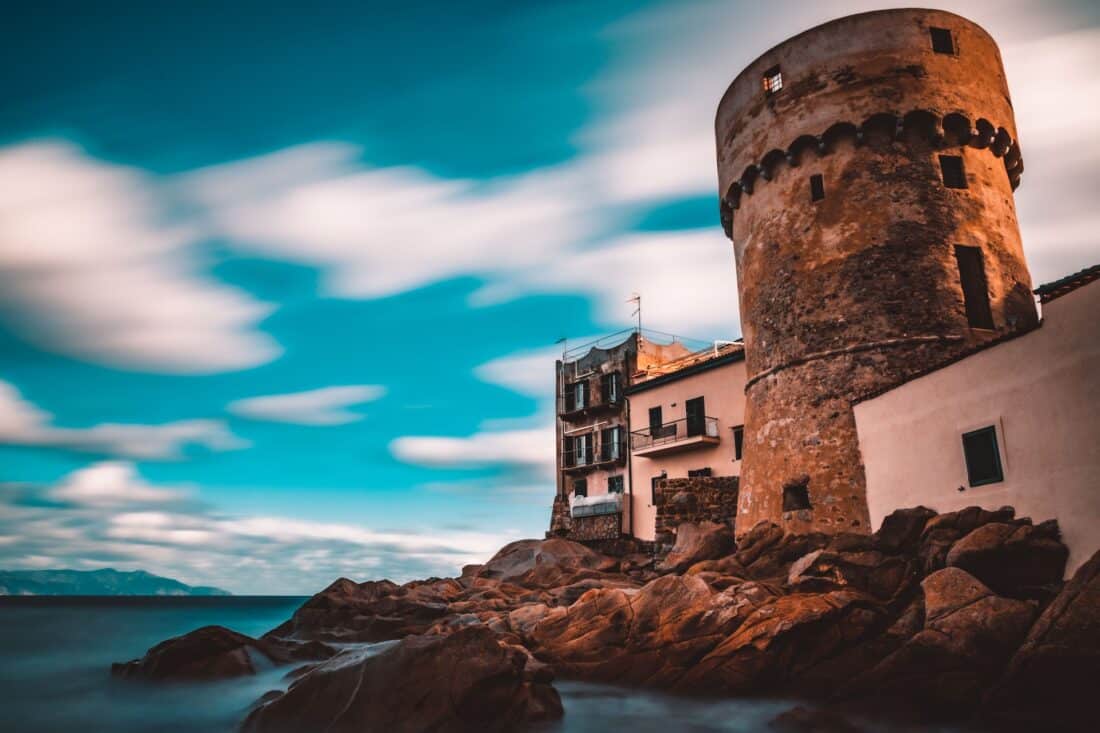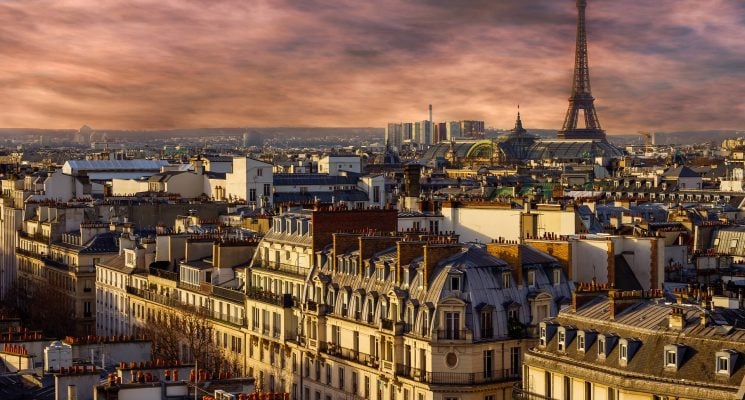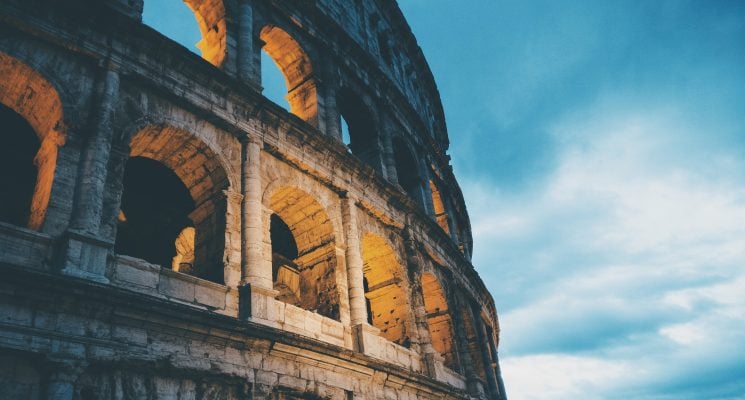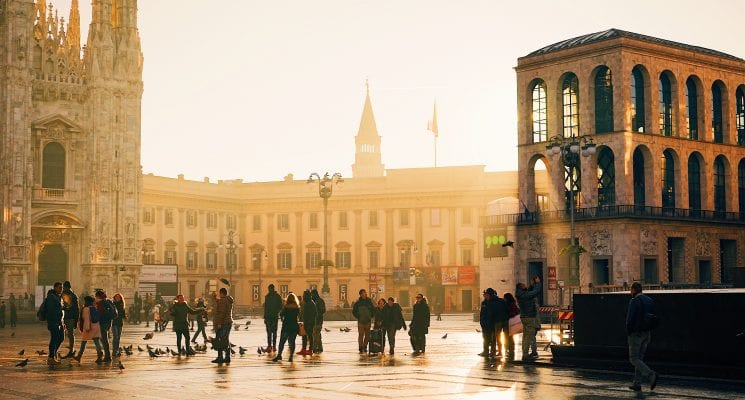Planning a trip to Italy but want to escape the crowds? Here are 25 hidden gems to discover when getting off the beaten track in the Bel Paese.
Italy is one of my favorite places in the world. Over the last 6 years, I’ve spent a lot of time exploring everything the country has to offer. From living in an unheard-of northern valley during the pandemic to my stint as an English teacher in Florence. The countless weekend trips and city breaks, the return trips – most of my friends know that I’m pretty obsessed with Italy. So, I jumped at the opportunity to take a trip down memory lane and write about all my best-loved spots.
Famous as the birthplace of the Renaissance and countless brilliant minds and artists, today Italy is one of the world’s most sought-after tourist destinations and home to many of the best cities in Europe. Boasting diverse scenery, rich cuisine, and unique culture – it’s easy to see why travelers from all over the globe flock to this Mediterranean destination.
However, when organizing a trip to Italy, most people head to major cities like Rome, Florence, Venice, and Milan. Although you could spend weeks in any of these places and still not see everything when you look more closely, Italy is full of secluded gems with plenty to offer.
Table of Contents
Hidden Gems in Italy
I’ve chosen 23 of the best less-visited locations across Italy to give you a true taste of La Dolce Vita. I’ve tried to make it easier by separating the hidden gems based on their location in the north, central, or south of the country.
Hidden Gems in North Italy
Known for the majestic Alps that separate it from countries like Austria, Switzerland, and France, many tourists head north to lap up the unique beauty of Venice and experience the countless awesome things to do in Milan.
But there’s a lot more to discover. If you want to explore the best of northern Italy, be sure to include some of these hidden gems on your itinerary.
Bergamo

Situated northeast of Milan, Bergamo is a striking hilltop city that’s often overlooked due to its close proximity to the bustling northern capital. The city is split into two sections: Città Alta (the old town on top of the hill) and Città Bassa (the newer town below).
Despite its small size, Bergamo oozes charm and history with its juxtaposing medieval monuments and thriving energy. Explore its cobbled streets, feast on mouth-watering Casoncelli Bergamaschi (a half-moon-shaped filled ravioli), and soak up the atmosphere over an evening aperitivo in the Piazza Vecchia (old square).
Must-see highlights include the Basilica di Santa Maria Maggiore and the adjacent Cappella Colleoni. It’s also worth visiting the Ex Monastero del Carmine, an architectural jewel now managed by a historic international theater company that often hosts cultural events, shows, and concerts.
A friend of mine who has previously lived in Bergamo recommended that I eat at Il Circolino Città Alta, a terraced restaurant that serves up traditional cuisine at affordable prices. I’ll pass along that recommendation – it was delicious.
Getting to Bergamo: Bergamo can be visited as a day trip from Milan or neighboring Lake Como as it’s about an hour’s train ride away from both. There’s also an international airport.
Val Camonica (Province of Brescia)
Val Camonica was the first place in Italy to be awarded UNESCO World Heritage status in 1979 due to the presence of ancient rock carvings dotting the valley.
I was lucky enough to spend the best part of a year in Val Camonica, and quickly found myself falling in love with its landscapes, history, and people. I could write an entire article on this place, but I’ll try to share as much as I can in a few short paragraphs. You’ll need a car to get around as the valley stretches over 90 km, but the best way to take in the sights and find the endless hidden gems this place has to offer is by bike.
Nestled in the central Alps, this picturesque location offers idyllic landscapes, fascinating culture, and – like everywhere in Italy – delicious food. Spend your time hiking or skiing in Stelvio Nature Park, exploring the quaint villages throughout the valley, and learning about the region’s special history.
Discover the petroglyphs dotted throughout the valley around Capo di Ponte and between Darfo and Edolo, and spend some time exploring the quaint villages of Breno – with its striking hilltop castle ruins -, Bienno, and Lovere.
Be sure to visit Lake Iseo, which is surrounded by medieval towns and mountain vistas. Take the ferry from Sulzano across to Monte Isola, a distinctive island that emerges from the lake’s glimmering waters. It’s one of the most magical places I’ve ever visited, and somewhere I find myself returning to time and time again.
Hike up to the hilltop monastery, explore secret corners and quiet hamlets, and soak up the slow way of life. Stop for delicious seafood with a view at Trattoria “La Spiaggetta” di Dalmeri Elena.
Getting to Val Camonica: It’s best to rent a car if you want to explore Val Camonica, but you can also reach the more prominent towns in the area by train or bus from cities like Brescia and Bergamo.
Trento

Situated south of the Dolomites in the Trentino-Alto Adige region, Trento offers world-class charm, delectable cuisine, and enchanting landscapes. A paradise for hikers and mountain bikers, Trento is one of the best-hidden gems in Italy for nature lovers.
Explore the city’s stone castles, marvel at medieval frescoes, and soak up Trento’s Austrian influence while enjoying the atmosphere in one of its many beer halls.
Getting to Trento: Trento is easily reached by train from larger cities like Venice, Verona, Milan, Bergamo, and Bolzano.
Chiusa (Klausen)
Chiusa (Klausen in German) is a scenic comune located in South Tyrol just 20 km from Bolzano. Situated on the banks of the river Eisack, this alluring town offers marvelous architecture, Gothic churches, and picture-perfect mountain landscapes.
If you’re visiting the north of Italy, be sure to pay a visit and spend the day exploring the old town and sampling world-class wine as you stroll through Chiusa’s hillside vineyards.
Getting to Chiusa: You can reach Chiusa by train from Trento or by driving the Klausen Pass, a stunning drive running directly through the Alps.
Camogli

Famous locations like Cinque Terre and Portofino often steal the limelight when it comes to the Italian Riviera. But nestled among the coastal towns is the hidden gem and local favorite Camogli.
With its traditional fishing village charm, this quieter spot is home to colorful houses, endearing eateries, and several hiking trails affording mesmerizing views. Soak up the sun, take in the history, and sample flavorsome Italian seafood fare while you take in the town’s laid-back vibe.
Getting to Camogli: Camogli is reachable by car or by train via the Genoa-La Spezia railway line.
Alba
Located in Piedmont just a short drive from the French border, Alba is known for its old town and white truffle and wine production. Nestled among rolling hills and vineyards that stretch on forever, this hidden gem is situated along the Tanaro River just a short drive from Turin.
Explore the town’s piazzas and meandering streets, taking in magnificent structures like the Alba Cathedral. If you’re lucky enough to visit during truffle season (October to December), be sure to time your trip to coincide with the Alba Truffle Fair.
Getting to Alba: It takes 1.5 hours to reach Alba by car from Turin, or you can take a bus and a train from Turin airport.
Bassano del Grappa
Shrouded by the formidable grandeur of the Dolomites is the small medieval town of Bassano del Grappa in the Veneto region, the hometown of potent liquor grappa.
The Ponte Vecchio (old bridge) which connects the town over the Brenta River dates back to 1569 and offers striking views of the Alps.
Enjoy the relaxed atmosphere, sample unforgettable food, and take in the history of this remarkable area. If you can stomach it, then don’t miss out on a grappa-tasting experience.
Getting to Bassano del Grappa: Take a train or bus from larger cities like Vicenza, Venice, or Treviso.
Hidden Gems in Central Italy
Central Italy is made up of four regions: Tuscany, Lazio, Umbria, and Marche. Although most tourists head to hotspots like Florence, Rome, and Pisa, there’s much more to discover.
Among the best places to visit in central Italy are some exquisite hidden gems.
Civita di Bagnoregio
Located in the province of Viterbo, Civita di Bagnoregio is a tiny town that’s only accessible by an enchanting walkway that winds its way up from the town below. This hidden gem looks like something out of a fairytale and is well worth the visit if you’re exploring central Italy.
Due to its hilltop location, Civita di Bagnoregio offers intoxicating views over the countryside and photo opportunities around every corner. You can see the town in one day, which makes it one of the best day trips from Rome.
Even though only a handful of residents live here year-round, several charming restaurants serve up local fare. Soak up the atmosphere and silence as you wander around the town and be sure to climb to the top of the bell tower to admire the surrounding vista.
Getting there: From Rome or Florence, take a fast train to nearby Orvieto and then a bus to the town of Bagnoregio. From there, walk up the hill.
Arezzo
Located just an hour from the teeming streets of Florence, Arezzo is a compact Italian city that’s often left out in favor of larger locations like Siena and Lucca. But its laid-back atmosphere and captivating history make it well worth a visit. You might also recognize Arezzo as the setting of the Oscar-winning film “Life is Beautiful”.
Be sure to spend some time exploring the city’s winding streets and piazzas, check out the artisan stores that line its alleyways, and sample rustic Tuscan cuisine. Other highlights include the Museo d’Arte Medievale e Moderna, Casa Vasari, and the Church of San Francesco. Arezzo is quite small, so it’s easily visitable as a day trip from Florence.
Getting to Civita di Bagnoregio: Arezzo is well-connected by train to various cities including Florence, Rome, and Perugia.
Along the via Francigena
I love slow travel. Walking is one of the best ways to discover new places, take in your surroundings, and get to know the locals.
A few years back, I walked about 300 km of the Via Francigena from Lucca to Rome (in August – it was hot), and it was one of the best experiences of my life to date. Every morning I woke up at 6 am (7 am when I felt like treating myself to a lie-in) and set off on the path. The only thing I had to focus on was putting one foot in front of the other to reach my destination and my mind was free to reflect on life, breathe in the fresh country air, and admire the sights. I could dedicate several articles to this journey alone – but that’s a story for another day.
If you want to get off the beaten track in Tuscany and you’re feeling adventurous, why not spend a week or two hiking the Via Francigena? The full pilgrimage trail stretches all the way from Canterbury to Rome, but many people choose the Tuscan section for its rolling landscapes and relatively flat terrain.
Wind your way along dusty paths lined with cypress trees and appreciate the diverse landscape dotted with vineyards and olive groves. You’ll pass through numerous medieval towns and hamlets including San Miniato, Gambassi Terme, San Gimignano, Monteriggioni, and more. Pilgrims typically stay in cheap accommodations dedicated to those doing the walk, which are often housed in old monasteries and churches.
So, lace up your hiking boots and hit the road!
Montepulciano
Although there are plenty of things to do in Florence and other nearby cities, taking a break from the crowds and heading to the countryside can be a great way to wind down and experience a different side of Italy.
Situated on top of a hill just outside Siena in southern Tuscany, Montepulciano is a medieval town and one of the best hidden gems in Italy. Famous for its elegant Renaissance palaces, historic churches, charming piazzas, and fruitful vineyards – Montepulciano has a lot to offer every kind of traveler.
From the town, you can enjoy expansive views across the Tuscan countryside. Be sure to sample finely aged wine made from the Sangiovese grapes that are grown in the region.
Getting to Montepulciano: I recommend visiting Montepulciano and other hidden towns in Tuscany by car. Not only is it easier, but you’ll be met with phenomenal views around every corner. However, you can also reach Montepulciano by bus from bigger cities like Rome, Florence, and Siena.
Gubbio
Gubbio is a medieval Umbrian town and one of the best hidden gems in Italy. With its picture-perfect cobbled streets, colorful houses, and mountain surroundings – Gubbio is a sight to behold.
Soak up the atmosphere in the Piazza Grande and explore fresco-filled churches before taking the (slightly terrifying) bird-cage-style cable car up to the Basilica di Sant’Ubaldo.
Getting to Gubbio: Via car or bus from Perugia.
Marche
Ok, I know it’s kind of cheating to classify an entire region as a hidden gem but in the case of Marche, I think it’s justified!
This part of Italy has been labeled “the new Tuscany” and boasts unspoiled landscapes, authentic Italian culture, and fantastic food. What’s more, it’s a region that’s often overlooked, which makes it perfect for escaping the crowds and getting off the beaten track.
Must-see spots in Marche include the Furlo Gorge between Mount Pietralata and Mount Paganucci, the Frasassi Caves near Ancona, the white-sand Beach of the Two Sisters, and the historic town of Urbino, which was the birthplace of the artist Raphael.
Getting to Marche: The best way to reach the Marche region is by flying into Ancona airport or Bologna airport.
Hidden Gems in South Italy
The south of Italy is known for its sandy beaches, turquoise waters, and delectable cuisine. Away from larger cities like Naples, Bari, and Lecce, and tourist hotspots like the Amalfi Coast, there are plenty of hidden gems waiting to be explored in this part of the country.
Matera

Located in the Basilicata region, Matera is one of the most unique cities in the world and has a history dating back to 15000 BC. For over 9000 years, people have called this striking place home, with many residing in cave networks up until the 1950s when the government forced them from their subterranean dwellings.
The cave-like homes of Matera are carved from limestone rocks that teeter on the edge of a ravine. The city itself is truly an unforgettable sight. The best thing to do in Matera is to simply get lost. Be sure to visit the rock churches and cave houses that have been preserved as museums. Head to Belvedere di Piazza Giovanni Pascoli or Piazza San Pietro Caveoso for the best panoramic views at sunset.
The city’s rich culinary history has mainly consisted of grains, pulses, and vegetables over the years due to the poverty that was rampant among its inhabitants in the past. If you’ve always fancied eating fine Italian food in a cave, this is your chance.
Getting to Matera: The easiest way to get to Matera is to take the train from Bari to Matera Centrale and then walk for 15 minutes to reach the city.
Tratturi of Molise
Molise is a region in the south of Italy that’s often forgotten. In fact, it’s a common joke that Molise “doesn’t exist”. But – fortunately – it does, and it’s one of Italy’s best-kept secrets.
The ancient tratturi are a main feature of the Molisan landscape. These historic grassy mountain paths were traditionally used by shepherds who were moving their herds across the mountains in Abruzzo to the plain of the Apulias and back. Tourists can hike the paths themselves to connect with the transhumance lifestyle.
The Celano-Foggia Tratturo is the longest trail that crosses Molise and spans almost 80 km, crossing 16 villages. Avid hikers may consider embarking on this route to embrace the beauty of this lesser-known region of Italy.
Getting to Molise: Take the train or bus from Rome or L’Aquila to Celano.
Ostuni

One of the most unique hidden gems in Italy, Ostuni is a hilltop town in Puglia known for its whitewashed city walls and buildings. This picturesque spot exudes simple elegance. If you’re planning a road trip in south Italy, Ostuni should definitely be on your itinerary.
Things to do in Ostuni include getting lost in the historic center, visiting the Gothic-style Cathedral of Ostuni, and slurping ice cream at the popular Cremeria La Scala. Here, you’re also near some of the region’s best beaches including Lido Morelli, Rosa Marina, and Quarto di Monte which are all less than 10 km from the city center.
Getting to Ostuni: The nearest airport to Ostuni is Brindisi. The city can be reached by train from Brindisi, Bari, and other nearby towns.
Monopoli
Another hidden gem in Puglia, Monopoli is more off the beaten track than other popular seaside locations in the south.
If you want to experience crystal-clear waters and sandy shores, there’s no better way to explore Monopoli’s beaches than by renting a bike and following the coastal cycle path.
Porto Verde Beach can’t be missed, and be sure to cool off with a walk through the town. Pay a visit to the baroque cathedral, the archaeological museum, and the frescoed Palmieri Palace.
Getting to Monopoli: Take the train from Bari Centrale.
Castelmezzano
A tucked-away mountain village in the province of Potenza, Castelmezzano offers a village atmosphere and plenty of authentic Italian culture. Plus, there’s guaranteed to be no crowds!
Although it’s small, Castelmezzano has a lot to offer including a charming historic center, numerous restaurants and bars, and the captivating Church of Santa Maria dell’Olmo.
Hikers can enjoy countless hiking trails in the surrounding areas. One of the most beloved routes is the Gradinata Normanna, which leads to the Dolomite hills.
Getting to Castelmezzano: The easiest way to reach Castelmezzano is by road. It’s situated a 2-hour drive from both Naples and Bari.
Best Hidden Gems in Italy – The Islands
Italy’s island locations are popular summer tourist destinations for locals and tourists. People flock from around the world to island destinations like Sardinia and Sicily to soak up the Mediterranean summer and enjoy the best Italian beaches.
For this reason, islands like Sardinia and Sicily can become extremely busy during the summer months. However, it is possible to avoid crowds if you plan your itinerary correctly.
Nuoro, Sardinia
Nestled in the mountains of the Barbagia region in central Sardinia, Nuoro is a hidden gem in Italy that’s worth visiting. If you want a holiday that’s different from the usual beach-hopping Sardinian holiday, Nuoro should be on your itinerary.
Explore the oldest neighborhood in Nuoro, Santu Predu, admire the view from Belvedere La Madonnina, and visit La Solitudine church. Also, be sure to check out the nuraghe (ancient megalithic edifices unique to Sardinia) that dot the area.
Getting there: The easiest way to explore Sardinia’s hidden gems is by car. We hired a car from Cagliari and drove all over the island. It was definitely the most comfortable way to get around and we got to see a lot of Sardinia’s wild side that simply isn’t accessible by public transport.
Sant’Antioco, Sardinia
Sant’Antioco is an island off the south coast of the island of Sardinia. Connected to the main island by an artificial bridge, this charming island is just an hour’s drive from Cagliari. If you want to get off the beaten track and explore some of Sardinia’s best-kept secrets, Sant’Antioco should be on your itinerary.
There are two main villages on the island: Sant’Antioco and Calasetta. You’ll find numerous beaches offering white sands and incredibly clear waters, as well as a range of museums and archeological sites to explore. The island is home to approximately 30 nuraghes, the most important being the S’Ega Marteddu Nuraghe and the Sa Cipudditta Nuraghe.
We had the best experience staying at Bella Calasetta Guesthouse when we visited. The hosts were astonishingly kind and generous and even took us out for dinner to neighboring Isola di San Pietro and it was a short walk to one of the best beaches we found, Spiaggia Le Saline.
Getting to Sant’Antioco: The best way to reach Sant’Antioco is to drive over the bridge from the mainland.
Isola del Giglio (Tuscany)

Isola del Giglio is an arresting island in the Tuscan archipelago in the Tyrrhenian Sea. It’s the second largest of the Tuscan islands after Isola d’Elba.
Offering turquoise seas, mesmerizing natural beauty, and a host of pretty villages, Isola del Giglio is one of Tuscany’s best hidden gems. Largely wild, the island offers various hiking trails, sandy beaches, and rocky outlets. Be sure to visit the port, with its colorful houses overlooking the bay.
Getting to Isola del Giglio: Take the ferry from Porto Santo Stefano. The boat ride takes about 1 hour.
Procida
Procida is a humble island in the Bay of Naples and is truly one of a kind. Under two square miles in total of vividly painted houses and narrow streets, Procida is one of the most authentic hidden gems in Italy.
Previously, the tiny island has mostly flown under the radar as tourists head to larger islands like Capri and Ischia. However, after it was awarded Italy’s Capital of Culture for 2022, interest in Procida has been steadily growing.
Stroll Marina Grande, filled with fishing boats and bay-side restaurants, and climb up to the fortified medieval village of Terra Murata. It’s also worth paying a visit to Chiesa di Santa Maria della Pietà and the lemon-yellow church of Santa Maria delle Grazie, which was built in 1679.
Food is also a highlight here. Sample fresh seafood at Marina Corricella, Procida’s oldest fishing village, and be sure to try a lingua di suocera (‘mother-in-law’s tongue’), Procida’s traditional lemon-curd puff pastry.
There are several beaches on Procida including Chiaiolella on the north, Chiaia to the south, and the black sand bay of Pozzo Vecchio.
Getting to Procida: Procida is an easy 30-minute ferry ride from the port of Naples.
Ortigia, Sicily
Ortigia, also called Ortygia, is a small island that’s essentially the historic center of the city of Syracuse. Although it’s not as hidden as some of the other gems on this list, it’s often overlooked in favor of other spots in Sicily like Palermo and Taormina.
There are several popular spots for swimming and sunbathing, as well as streets, churches, and piazzas that span over 2500 years of history. Don’t miss out on the Sicilian markets where you can find all kinds of fresh produce and mouth-watering plates of arancini, pasta alla norma (one of my favorites), and various other Sicilian dishes.
Getting to Ortigia: The nearest airport to Ortigia is Catania. Once you arrive in Syracuse, cross the three bridges connecting Ortigia to the mainland.
Best Hidden Gems in Italy Wrap-up
So, there you have it! 23 of the best hidden gems in Italy.
Are you ready to escape the crowds and experience this one-of-a-kind country like never before? I hope so! As always, happy travels everyone. and I’ll see you on the road (or in an Italian coffee shop!)






























